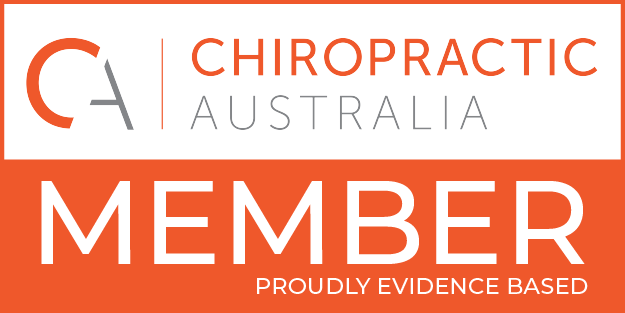Both chronic pain and mental health disorders are extremely common conditions within the general population. Up to 80% of Australians will experience back pain in their life, and it is the leading cause of loss of work and income poverty in Australia. It’s estimated that 43.7% of Australians have experienced a mental health disorder in their lifetime. Epidemiological studies suggest a bidirectional relationship is present between mental health disorders and chronic pain. Observations from these studies even suggest shared neural mechanisms for these conditions. These neural mechanisms are referred to as the pain matrix.
There are many reasons an individual may suffer from chronic pain, however, in this blog post, we will mainly discuss the impact of musculoskeletal causes of chronic pain. Chronic pain is defined as a persistent discomfort that lasts longer than 3 months, creating interference with activities of daily living, due to fear avoidance behaviour. Additionally changes to an individual’s mood, relationships, sleep and overall quality of life are often negatively impacted when suffering from a chronic pain condition. An individual suffering from chronic pain is at an increased risk of depression, anxiety, substance abuse disorders, and suicide. For more information on how to manage chronic low back pain effectively, read Jess’s blog on maintenance care for low back pain.
What is the pain matrix?
The “pain matrix” refers to a network of brain regions involved in the perception and processing of pain. It’s a term used in neuroscience to describe the complex system that coordinates the experience of pain within the brain. The pain matrix involves various regions of the brain that work together to process and interpret pain signals.
Regions of the brain
- Somatosensory Cortex: Responsible for processing sensory information, including pain, and identifying the location and intensity of the pain.
- Thalamus: Acts as a relay station for sensory information, directing signals from the spinal cord to the different areas of the brain involved in processing pain.
- Insular Cortex: Plays a role in integrating sensory information, emotions, and cognitive processes related to pain perception.
- Anterior Cingulate Cortex (ACC): Involved in the emotional aspects of pain, such as the unpleasantness or distress associated with it. It also helps regulate attention and decision-making related to pain.
- Prefrontal Cortex: Responsible for higher cognitive functions, including decision-making, memory, and emotional regulation related to pain perception.
It’s important to note that as the interpretation of pain occurs along different levels of our nervous system, and within these levels are various synapses and pathways, these are essentially the delivery system of the pain message to the next region of our brain or nervous system. This is important because we have the potential to alter the message that is sent to the next level of the pain matrix. We can amplify it, or attempt to stop it in its tracks, meaning pain can be either intensified or softened by our emotional and behavioral states.
The pain matrix operates dynamically and can be influenced by various factors, including emotions, past experiences, expectations, and individual differences. For example, factors like anxiety, stress, or attention can modulate the perception and experience of pain by affecting how the pain matrix functions.
The link between chronic pain and mental health disorders – a vicious cycle
Research shows a clear link between individuals suffering from a chronic pain condition and the presence of depressive symptoms and major mood disorders. For example, an individual suffering from fibromyalgia, chronic back pain, temporomandibular joint disorders, or chronic abdominal pain is 50% more likely to suffer from a high-level depressive disorder. There is an estimated prevalence of depression exceeding 20% in those suffering from painful arthritic conditions, migraine headaches, and pelvic pain. A population-based study involving 845 adults who had mild or disabling neck or lower back pain found that these individuals were 2.0 – 2.5 times more likely to experience a depressive episode at 6 – 12 month follow-ups when compared to individuals without back pain.
On the flip side, pain-free individuals who suffered extremely elevated levels of depressive symptoms were 4 times more likely to develop lower back or neck pain at the 6 – 12 month follow-up when compared to individuals with lower levels of depressive symptoms. Similar studies also concluded that the rate of depression increased with greater pain severity. These findings suggest a bidirectional relationship between chronic pain and depression, in which one condition can worsen the other. They also suggest the severity of depression can be heightened by the intensity of the pain, and vice versa. Not only that, but imaging of the brain also displays alterations in regions of the brain responsible for the processing of emotional stimuli and pain stimuli in those suffering from chronic pain and depressive disorders.
So how do we address this connection?
Addressing the link between mental health disorders and chronic pain is a very important first step to managing these conditions. It is important to understand that pain is extremely multi-faceted, and the more research that is done on pain the more we understand there is a lot more than biomechanical causes of pain. When managing a chronic pain condition it is important to implement the following approaches into your care plan:
Holistic Approach to Treatment
Treating chronic pain should involve a holistic approach that considers both physical and mental well-being. Integrated therapies that address both aspects can be more effective. This could mean seeing a chiropractor alongside seeing a psychologist. It also means addressing your well-being as a whole; look at what you’re eating, and drinking, how you spend your day, your social support systems, how you’re sleeping, etc.
Mental Health Support
Patients with chronic pain should have access to mental health support services like counselling or therapy to cope with emotional distress. As discussed, there is a bidirectional relationship between chronic pain and depressive symptoms, and while you might not think therapy or psychology is for you, cognitive behavioural therapy has very favourable results in managing chronic pain and depressive disorders. Cognitive behavioural therapy should only be done by a trained professional such as a psychologist. If your chiropractor refers you to a psychologist, it’s not because they think you’re ‘crazy’, it’s because they genuinely care about you getting better.
Mind-Body Techniques
Practices like mindfulness, relaxation techniques, journaling, yoga nidra and meditation can help manage both pain and associated mental health issues. This is something you can do for yourself without the reliance of a health professional. There are great apps and podcasts on Spotify now that can run you through guided meditations or yoga nidra. I use the “Insight Timer” and/or the Sam Harris “Waking Up” app.
Supportive Communities
Social connection is imperative to our well-being. It’s something we need even if we’re not suffering from a chronic pain or depressive condition. Creating supportive communities and networks can alleviate isolation and provide invaluable emotional support.
Focus on what you can do, rather than what you can’t do
A focus on pain and how it limits you from activities or movements you previously were able to do will reinforce those neural pathways in the brain we previously discussed that are linked to pain perception. So, shift the focus from what you can’t do, back to what you can do. This creates positive adaptations in our brain’s neural pathways and helps to decrease the amount of pain we feel.
Chronic pain and mental health struggles often walk hand in hand, creating a challenging landscape for those affected. Recognising and addressing the interconnectedness between these two realms is essential for effective pain management and overall well-being. It’s crucial to break the stigma surrounding mental health in the context of chronic pain, promoting a comprehensive approach that addresses both the physical and emotional aspects of this challenging condition. By acknowledging this link, fostering empathy, and providing comprehensive care, we can offer better support to those navigating the complex intersection of chronic pain and mental health.
References
- Low Back Pain in Australia Infographic. September 2022
- Prevalence and impact of mental illness – Mental health – AIHW
- Hooten WM. Chronic pain and mental health disorders: shared neural mechanisms, epidemiology, and treatment. InMayo Clinic Proceedings 2016 Jul 1 (Vol. 91, No. 7, pp. 955-970). Elsevier.
- Legrain V, Iannetti GD, Plaghki L, Mouraux A. The pain matrix reloaded: a salience detection system for the body. Prog Neurobiol. 2011 Jan;93(1):111-24. doi: 10.1016/j.pneurobio.2010.10.005. Epub 2010 Oct 30. PMID: 21040755.
- Steel Z, Marnane C, Iranpour C, et al. The global prevalence of common mental disorders: a systematic review and meta-analysis 1980-2013. Int J Epidemiol. 2014;43(2):476-493.
- Kudlow PA, Rosenblat JD, Weissman CR, et al. Prevalence of fibromyalgia and co-morbid bipolar disorder: a systematic review and meta-analysis. J Affect Disord. 2015;188:134-142
- Giannakopoulos NN, Keller L, Rammelsberg P, Kronmüller KT, Schmitter M. Anxiety and depression in patients with chronic temporomandibular pain and in controls. J Dent. 2010;38(5):369-376.
- Demyttenaere K, Bruffaerts R, Lee S, et al. Mental disorders among persons with chronic back or neck pain: results from the World Mental Health Surveys. Pain. 2007;129(3):332-342.
- Dersh J, Gatchel RJ, Mayer T, Polatin P, Temple OR. Prevalence of psychiatric disorders in patients with chronic disabling occupational spinal disorders. Spine (Phila Pa 1976). 2006; 31(10):1156-1162.
- Reme SE, Tangen T, Moe T, Eriksen HR. Prevalence of psychiatric disorders in sick listed chronic low back pain patients. Eur J Pain. 2011;15(10):1075-1080.
- Von Korff M, Crane P, Lane M, et al. Chronic spinal pain and physical-mental comorbidity in the United States: results from the national comorbidity survey replication. Pain. 2005;113(3): 331-339.








